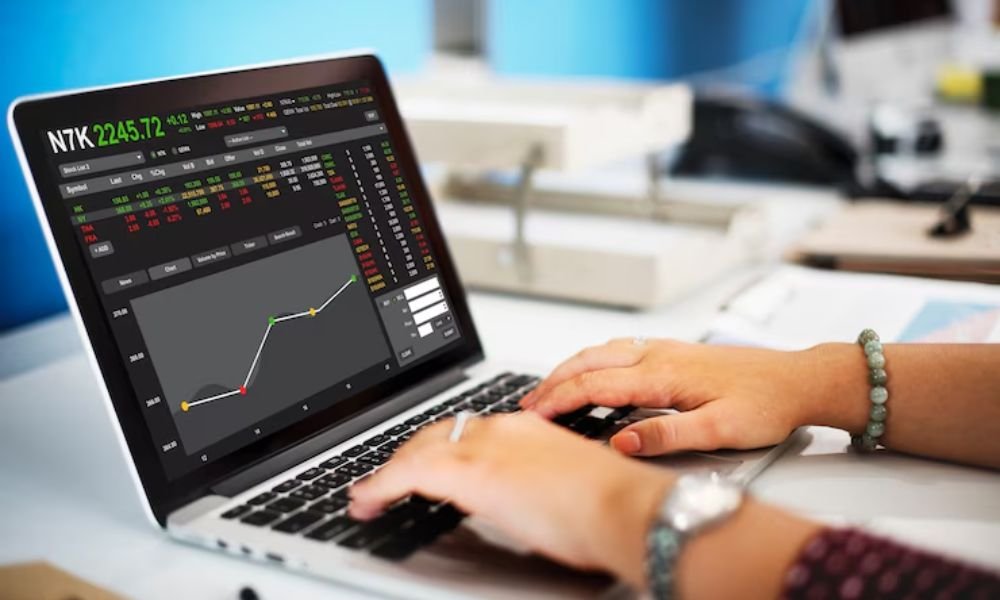Exchange-Traded Funds (ETFs) have become a cornerstone of modern investment portfolios, offering diversification, liquidity, and cost-effectiveness. As we approach 2025, investors are keen to identify the best ETFs that align with their financial goals, whether it’s capital appreciation, income generation, or hedging against market volatility.


In this article, we delve into the top ETFs to invest in for 2025, focusing on a blend of growth-oriented, value-driven, and sector-specific funds. Whether you’re a seasoned investor or just starting, these ETFs present compelling opportunities for the upcoming year.
Why ETFs Are a Smart Choice in 2025?
ETFs offer several advantages that make them attractive to investors:
- Diversification: By holding a basket of securities, ETFs reduce the risk associated with individual stocks.
- Liquidity: ETFs trade on major exchanges, allowing investors to buy and sell throughout the trading day.
- Cost-Effectiveness: With lower expense ratios compared to mutual funds, ETFs are a cost-efficient investment vehicle.
- Transparency: Holdings are disclosed regularly, providing investors with clear insights into their investments.
As we look ahead to 2025, these benefits remain pertinent, and selecting the right ETFs can significantly impact your investment returns.
Top ETFs to Invest in 2025
As 2025 unfolds, investors are actively seeking the best ETFs to help grow and protect their wealth amid shifting economic landscapes. The top ETFs to invest in this year include a mix of broad-market funds, sector-specific plays, and value-driven options that cater to diverse risk appetites and financial goals. From tech-heavy ETFs capturing innovation to value ETFs 2025 investors are watching for long-term upside.
This year’s ETF landscape offers something for everyone. Whether you’re building a new portfolio or rebalancing an existing one, these carefully selected ETFs to buy in 2025 can provide strong potential for growth, income, and stability.
1. Vanguard S&P 500 ETF (VOO)
The Vanguard S&P 500 ETF (VOO) continues to be a top choice for investors seeking exposure to the U.S. large-cap equity market. Tracking the S&P 500 Index, VOO offers diversified exposure to 500 of the largest U.S. companies.
- Expense Ratio: 0.03%
- Assets Under Management (AUM): Over $500 billion
- Top Holdings: Apple, Microsoft, Amazon, Alphabet, and Tesla
VOO’s low expense ratio and broad market exposure make it a staple in many investment portfolios.
2. Invesco QQQ Trust (QQQ)
For those looking to capitalize on the technology sector, the Invesco QQQ Trust (QQQ) is a compelling option. This ETF tracks the Nasdaq-100 Index, which includes 100 of the largest non-financial companies listed on the Nasdaq Stock Market.
- Expense Ratio: 0.20%
- AUM: Approximately $200 billion
- Top Holdings: Apple, Microsoft, Amazon, Alphabet, and Nvidia
QQQ provides concentrated exposure to tech giants, making it suitable for investors with a higher risk tolerance.
3. SPDR S&P 500 Value ETF (SPYV)
For value-focused investors, the SPDR S&P 500 Value ETF (SPYV) offers exposure to U.S. companies that are undervalued relative to their fundamentals.
- Expense Ratio: 0.04%
- AUM: Over $10 billion
- Top Holdings: Berkshire Hathaway, Johnson & Johnson, and JPMorgan Chase
SPYV focuses on companies with lower price-to-earnings ratios, appealing to those seeking potential long-term gains at a discount.
4. Vanguard Total Stock Market ETF (VTI)
The Vanguard Total Stock Market ETF (VTI) provides exposure to the entire U.S. stock market, including small-, mid-, and large-cap stocks.
- Expense Ratio: 0.03%
- AUM: Over $300 billion
- Top Holdings: Apple, Microsoft, Amazon, Alphabet, and Tesla
VTI’s comprehensive coverage makes it an excellent choice for investors seeking broad market exposure.
5. iShares MSCI Emerging Markets ETF (EEM)
For those looking to diversify internationally, the iShares MSCI Emerging Markets ETF (EEM) offers exposure to companies in emerging markets.
- Expense Ratio: 0.68%
- AUM: Approximately $30 billion
- Top Holdings: Tencent, Alibaba, Samsung Electronics, and Taiwan Semiconductor
EEM provides access to high-growth potential regions, albeit with higher volatility.
6. Vanguard Dividend Appreciation ETF (VIG)
Income-focused investors may find the Vanguard Dividend Appreciation ETF (VIG) appealing. This ETF targets companies with a history of increasing dividends year over year.
- Expense Ratio: 0.06%
- AUM: Over $50 billion
- Top Holdings: Microsoft, Johnson & Johnson, and Procter & Gamble
VIG offers a blend of income and stability, suitable for conservative investors.
7. ARK Innovation ETF (ARKK)
For investors seeking exposure to disruptive innovation, the ARK Innovation ETF (ARKK) focuses on companies in sectors like technology, genomics, and automation.
- Expense Ratio: 0.75%
- AUM: Approximately $20 billion
- Top Holdings: Tesla, Roku, and CRISPR Therapeutics
ARKK is ideal for those willing to accept higher volatility for the potential of significant returns.
8. Schwab U.S. Dividend Equity ETF (SCHD)
The Schwab U.S. Dividend Equity ETF (SCHD) focuses on high-quality U.S. companies with a strong track record of paying dividends.
- Expense Ratio: 0.06%
- AUM: Over $30 billion
- Top Holdings: PepsiCo, Cisco Systems, and Merck
SCHD offers a combination of income and capital appreciation, appealing to long-term investors.
9. iShares Core U.S. Aggregate Bond ETF (AGG)
For those seeking stability and income, the iShares Core U.S. Aggregate Bond ETF (AGG) provides exposure to the U.S. investment-grade bond market.
- Expense Ratio: 0.04%
- AUM: Over $80 billion
- Top Holdings: U.S. Treasury Bonds, Agency Bonds, and Corporate Bonds
AGG serves as a ballast in a diversified portfolio, especially during periods of equity market volatility.
10. SPDR Gold Shares (GLD)
As a hedge against inflation and economic uncertainty, the SPDR Gold Shares (GLD) offers exposure to the price of gold bullion.
- Expense Ratio: 0.40%
- AUM: Over $60 billion
- Top Holdings: Physical Gold Bullion
GLD provides investors with a straightforward way to gain exposure to gold without the complexities of owning physical gold.

